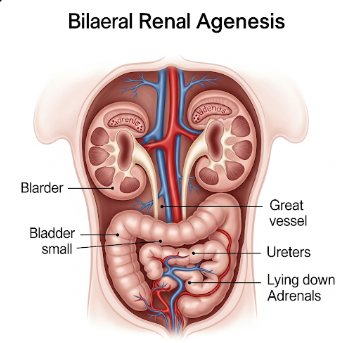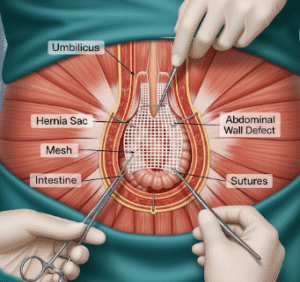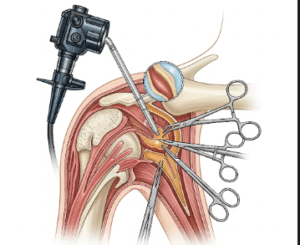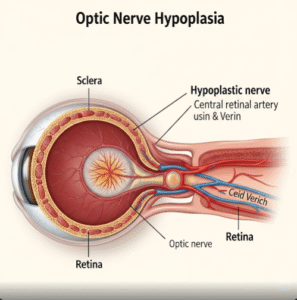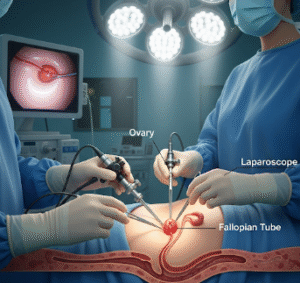Overview
Bilateral Renal Agenesis (BRA) is a rare congenital disorder in which both kidneys fail to develop during fetal growth. This condition is often detected prenatally via ultrasound and is part of a spectrum of congenital anomalies known as Potter sequence, characterized by underdeveloped lungs, abnormal facial features, and limb deformities due to reduced amniotic fluid. BRA is a life-threatening condition, as infants are unable to produce urine, leading to pulmonary hypoplasia and other severe complications.
In Korea, prenatal screening and genetic counseling play a critical role in early diagnosis. Advanced fetal imaging and multidisciplinary care allow healthcare professionals to inform parents about the prognosis and available options.
What is Bilateral Renal Agenesis?
Bilateral Renal Agenesis is the complete absence of both kidneys at birth. Unlike unilateral renal agenesis, which may allow normal life with a single kidney, BRA is incompatible with postnatal survival due to severe underdevelopment of the lungs (pulmonary hypoplasia) and associated systemic complications.
The condition arises during the early stages of fetal development when the ureteric buds fail to interact properly with the metanephric mesenchyme, preventing kidney formation.
Symptoms
BRA is usually identified prenatally, but its hallmark features include:
- Oligohydramnios (very low amniotic fluid levels) during pregnancy
- Pulmonary hypoplasia, causing underdeveloped lungs
- Characteristic facial features (Potter facies) including:
- Flattened nose
- Receding chin
- Low-set ears
- Limb deformities, such as clubfoot or joint contractures
- Absence of kidney function, confirmed via imaging or postnatal assessment
Due to pulmonary insufficiency, infants with BRA rarely survive outside the womb.
Causes
The exact cause of BRA is often unknown, but it can result from:
- Genetic mutations affecting kidney development, including renal agenesis syndromes
- Environmental factors such as maternal drug exposure or toxins during early pregnancy
- Chromosomal abnormalities in rare cases
- Malformations in the ureteric bud-metanephric interaction during embryogenesis
Risk Factors
Risk factors associated with BRA include:
- Family history of renal agenesis or congenital kidney disorders
- Certain maternal exposures to teratogenic substances
- Genetic syndromes involving kidney malformations
- Advanced maternal age or complications during early pregnancy
Complications
Bilateral Renal Agenesis has severe complications due to the absence of kidneys and amniotic fluid:
- Pulmonary hypoplasia, often fatal immediately after birth
- Potter sequence deformities, including facial and limb abnormalities
- Inability to excrete metabolic waste, leading to severe systemic dysfunction
- Incompatible with long-term survival without experimental interventions such as prenatal dialysis
Prevention
Since BRA is primarily congenital and genetic, prevention strategies focus on risk reduction and early detection:
- Genetic counseling for at-risk families or couples with previous affected pregnancies
- Avoiding known teratogenic medications or environmental toxins during early pregnancy
- Early prenatal screening via high-resolution ultrasound
- Awareness of family medical history to identify potential hereditary risks
Treatment Options in Korea
Diagnosis
Korean medical centers emphasize early detection using advanced imaging:
- Prenatal ultrasound to assess kidney development and amniotic fluid levels
- Fetal MRI to provide detailed structural information if ultrasound is inconclusive
- Genetic testing to detect mutations or syndromes associated with renal agenesis
- Amniotic fluid measurement to monitor oligohydramnios and predict severity
Prenatal and Counseling Interventions
- Genetic counseling is provided to families with a prenatal BRA diagnosis
- Perinatal planning includes discussion of prognosis and potential experimental interventions
- Ethical guidance and support for parental decision-making regarding pregnancy continuation
Postnatal Management
- Unfortunately, BRA is generally incompatible with postnatal survival due to lung underdevelopment
- Intensive neonatal care may be attempted in experimental settings, but survival beyond a few hours is extremely rare
- Experimental prenatal interventions, such as fetal dialysis or amnioinfusion, are being researched in specialized centers but remain largely investigational
Rehabilitation and Support
- Psychological counseling for parents to cope with grief and loss
- Support groups and family education on congenital kidney disorders
- Multidisciplinary follow-up for families planning future pregnancies
Prognosis
The prognosis for infants with bilateral renal agenesis is extremely poor, as the absence of functional kidneys and severe pulmonary hypoplasia make survival outside the womb virtually impossible. Early prenatal diagnosis in Korea allows families to understand the condition, explore potential experimental options, and receive comprehensive counseling.

